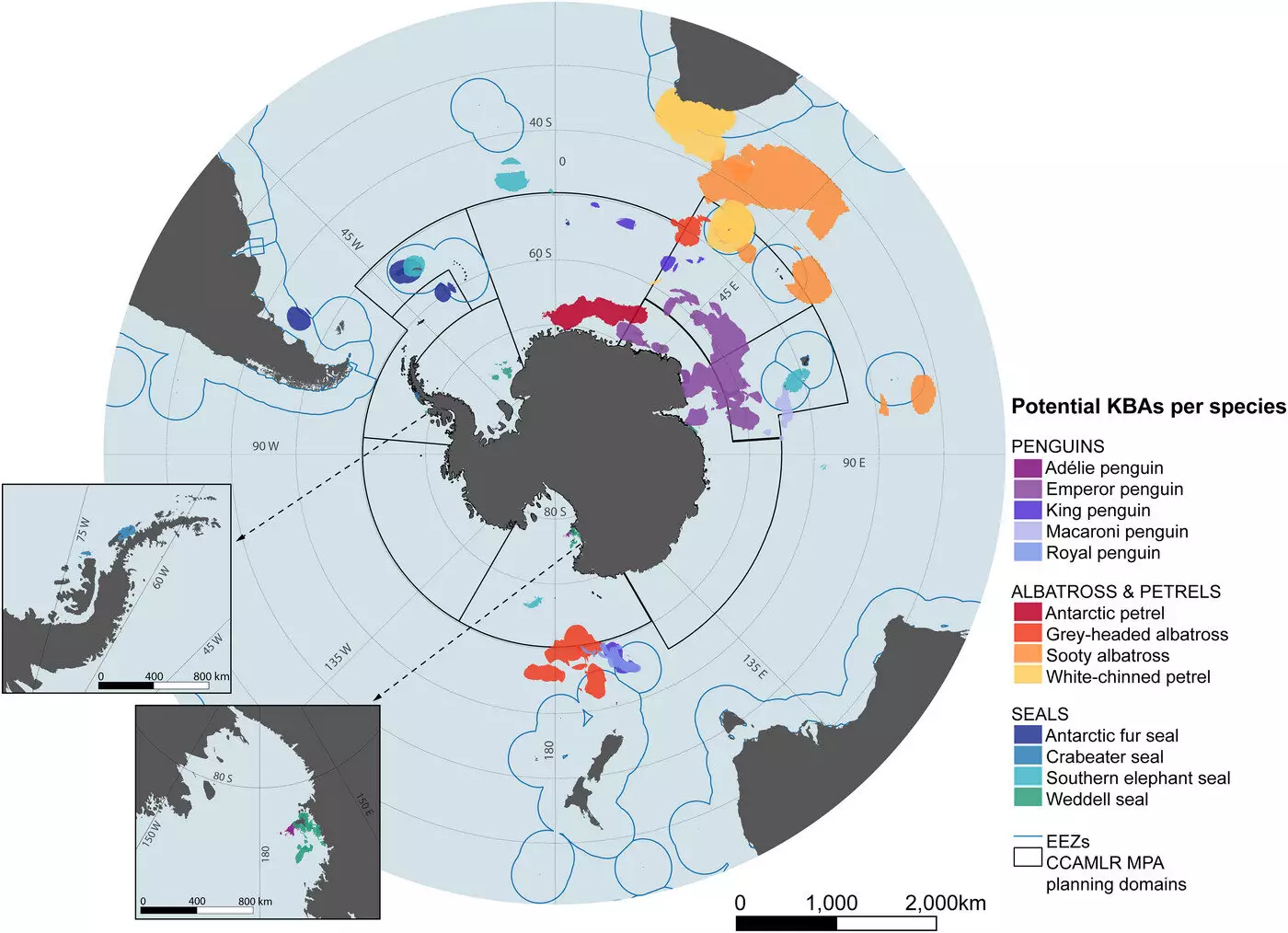Biodiversity in the Southern Ocean surrounding Antarctica is crucial for the preservation of many unique and important species. A team of scientists from the University of Colorado Boulder has recently identified 30 new key areas essential for conserving biodiversity in this region.
Without proper protection and limitations on human activities in these areas, native wildlife in the Southern Ocean could face significant population declines. The remote location and harsh conditions of Antarctica have historically provided a level of protection to these species. However, as climate change continues to warm the planet and melt sea ice, activities such as fishing and tourism are on the rise.
The team of researchers, led by Cassandra Brooks and Sarah Becker, set out to identify Key Biodiversity Areas (KBAs) across the Southern Ocean that are critical for the survival of various species. By utilizing existing tracking data for Antarctic and sub-Antarctic seabirds and seals, they were able to pinpoint 30 KBAs that serve as important marine habitats for foraging, breeding, and migration.
One notable aspect of this study is its ability to bridge the gap between broad-scale conservation efforts and the specific needs of individual populations. By identifying key sites like the foraging grounds near Amanda Bay in East Antarctica for emperor penguins or the breeding grounds near Campbell Island for gray-headed albatrosses, the researchers highlight the importance of considering unique life stages and migration patterns in conservation planning.
The findings from this study provide valuable information that international bodies and governments can use to develop effective conservation strategies. By restricting fishing and tourism activities in these key biodiversity areas, we can help give these animals the best chance of adapting and thriving in the face of climate change.
The Southern Ocean plays a crucial role in mitigating the effects of climate change. Its cold waters absorb a significant amount of human-generated carbon dioxide emissions and excess heat from global warming. By protecting the biodiversity in this region, we are not only preserving unique species but also safeguarding a critical buffer against the impacts of climate change.
The protection of biodiversity in the Southern Ocean is essential for maintaining the delicate balance of ecosystems in this region. Through careful research and strategic conservation planning, we can ensure the survival of native wildlife and contribute to the overall health of our planet. It is imperative that we take action now to preserve these vital marine habitats for future generations.


Leave a Reply